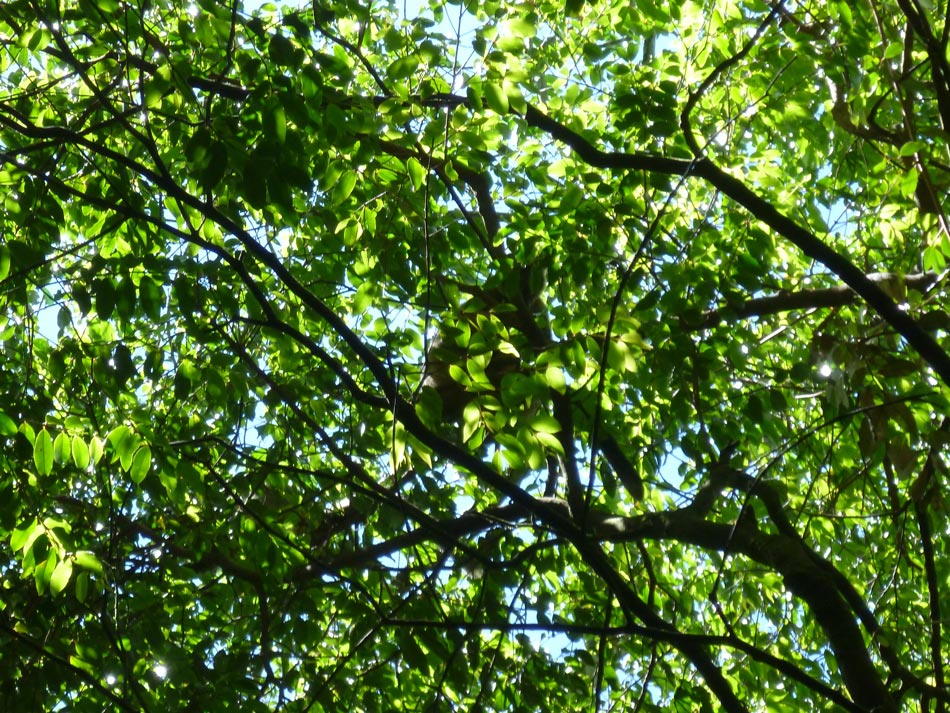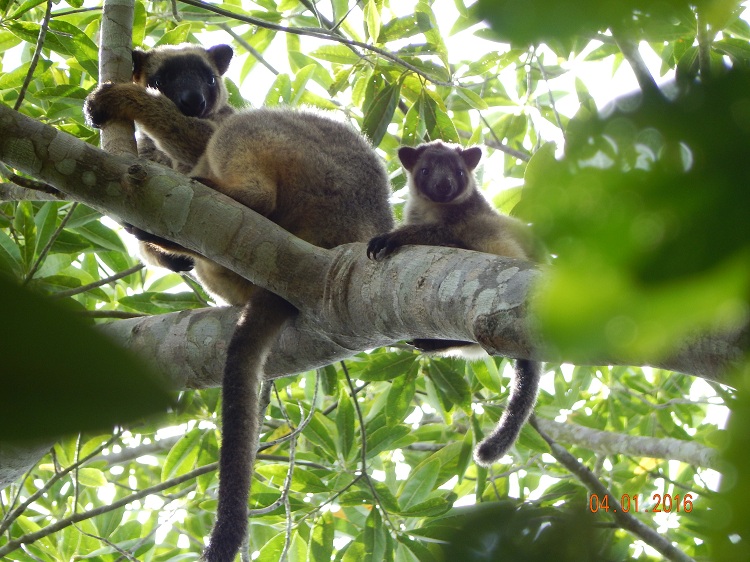LUMHOLTZ'S TREE KANGAROO SURVEY
Anecdotal knowledge and distributional information
Understanding Tree Kangaroos
The diet of Lumholtz's Tree-kangaroo's consists primarily of foliage from a broad range of tree species and some vines. They are often seen as solitary individuals or in small family groups, they can be active at any time of the day or night and are mostly arboreal.
The Lumholtz's tree-kangaroo's diet consists of a variety of leaves, flowers and fruits, in some cases they eat mainly the leaf stems, probably due to a higher protein content. A detailed list of the plant species Lumholtz's tree-kangaroo's are known to eat is available - TK Food plant list .
Lumholtz's tree-kangaroo's are largely solitary animals, and males can be aggressive towards others. So if you see a more than one Lumholtz's tree-kangaroo in a tree or close together, it is most likely to be one adult female, with a joey (recently out of the pouch) and possibly an older joey, with possibly a visiting adult male.


Community Survey Results
Lumholtz's Tree-kangaroo Community Survey 2000
In order to better understand the distribution and population of a species that is difficult to locate in the wild such as Lumholtz's Tree-kangaroo's the Tree Kangaroo and Mammal Group used a community survey that was mailed to everyone on the Atherton Tablelands, asking residents to record any sightings of Lumholtz's Tree Kangaroo's. This survey provided information on over 2000 tree-kangaroo sightings and the at the time provided a detailed overview of Lumholtz's tree-kangaroos with regards population and distribution.
Additional related documentation maps from the survey are available to download:
Further information on distribution and ecology
The distribution of Lumholtz's tree-kangaroo is restricted to north-eastern Queensland largely in the Wet Tropics Region, with a range extending from the Daintree River and Mt Carbine Tablelands near Mossman in the north, through the Atherton Tablelands to the Herbert River Gorge near Ingham in the south. Lumholtz's tree-kangaroo's occupy a wide elevation range from near sea level to 1600m above sea level. Lumholtz's tree-kangaroo can be relatively common in 'suitable habitat', such as forests growing on nutrient rich basalt soils, in comparison to nutrient poor acid igneous and metamorphic soils.
Lumholtz's tree-kangaroo's are restricted mostly to rainforest habitats, but also extend along riparian vegetation through primarily open forest habitats, and less abundantly in wet sclerophyll forests along the western edge of the Atherton Tablelands, for example areas such as Wondecla and Toumoulin.
Lumholtz's tree-kangaroo breeding is broadly seasonal, with most females producing a single young during the wet season. Age to maturity is two years for females and 4.6 years for males. While some species of Tree-kangaroo have been recorded as living to 20 years, for Lumholtz's tree-kangaroo's in the wild 12-15 years is considered more likely.

Far North Queensland ONLY-Click here to report a dead or injured Tree Kangaroo
